Anna Sui collaborates with students to design clothing for disabled fashionistas

In fashion, the words “sexy” and “disability” have rarely been used in the same sentence. Consider, for example, that the technical term for designs made for individuals with physical impairments is “adaptive clothing.” The phrase alone alludes to being purely functional, perhaps including Velcro, and probably not being very flattering at all.
That’s why Richard Jimenez, a graduate student at the Fashion Institute of Technology, decided to design a corset for a model with cerebral palsy for the Design for Disability Fashion Show and Gala. Hosted on Wednesday night by the Cerebral Palsy Foundation at New York’s Metropolitan Pavilion, the focus of the evening was almost entirely on clothing that emphasized not only the bodies but also the personalities of the actors, dancers, nurses, playwrights, and advocates who were chosen as models.
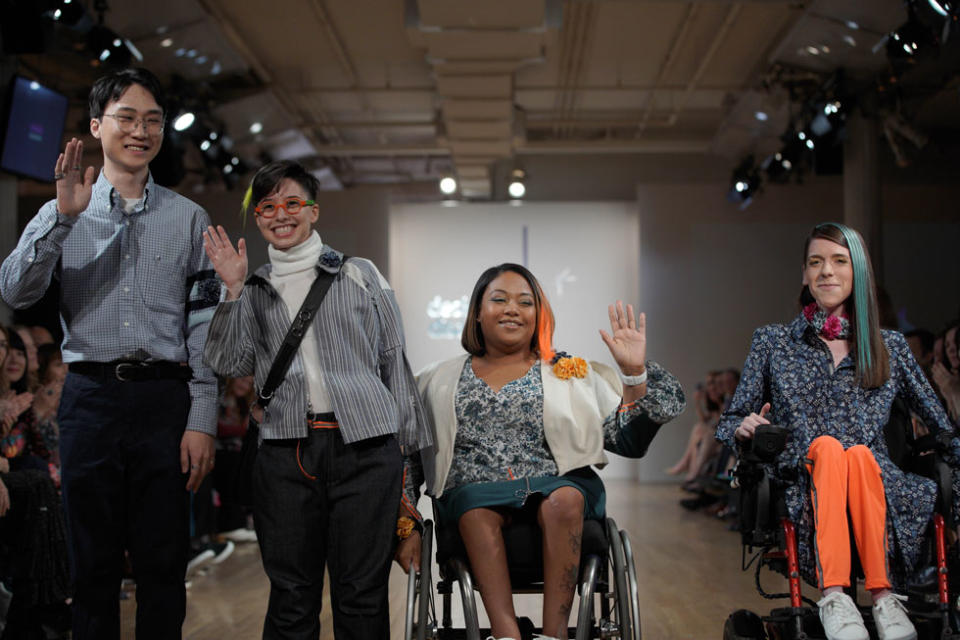
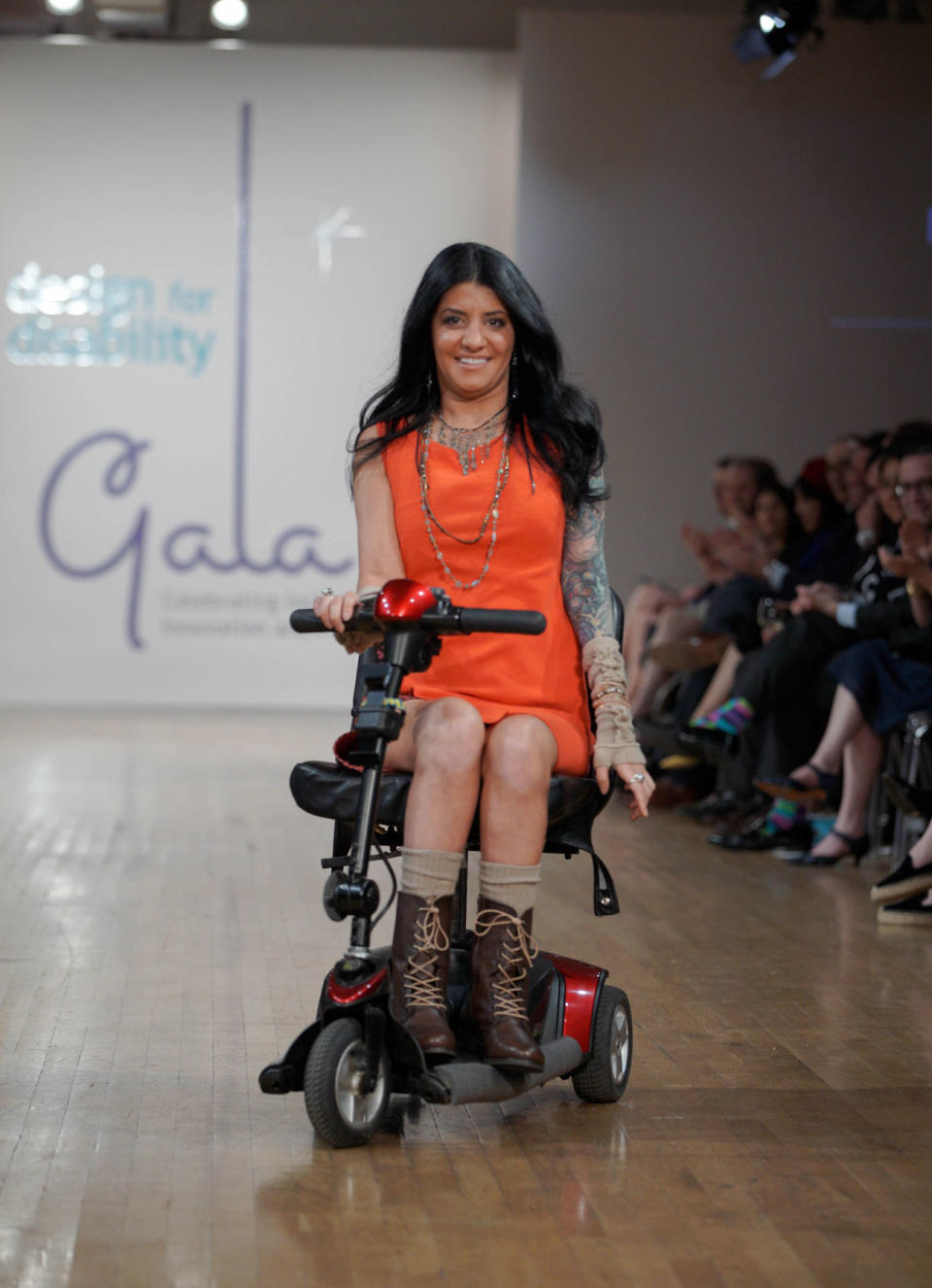
“When we’re designing for individuals with disabilities we tend to go straight to the technical side, instead of backing up and seeing how we can make their clothes look so great that everyone wants to wear them,” Jimenez tells Yahoo Lifestyle.
The model who wore his corset (which was finished off with comfortable spandex side panels) was Jessy Yates, an actress and performance artist who just became the first physically disabled person to be admitted to Yale’s Graduate School of Drama.
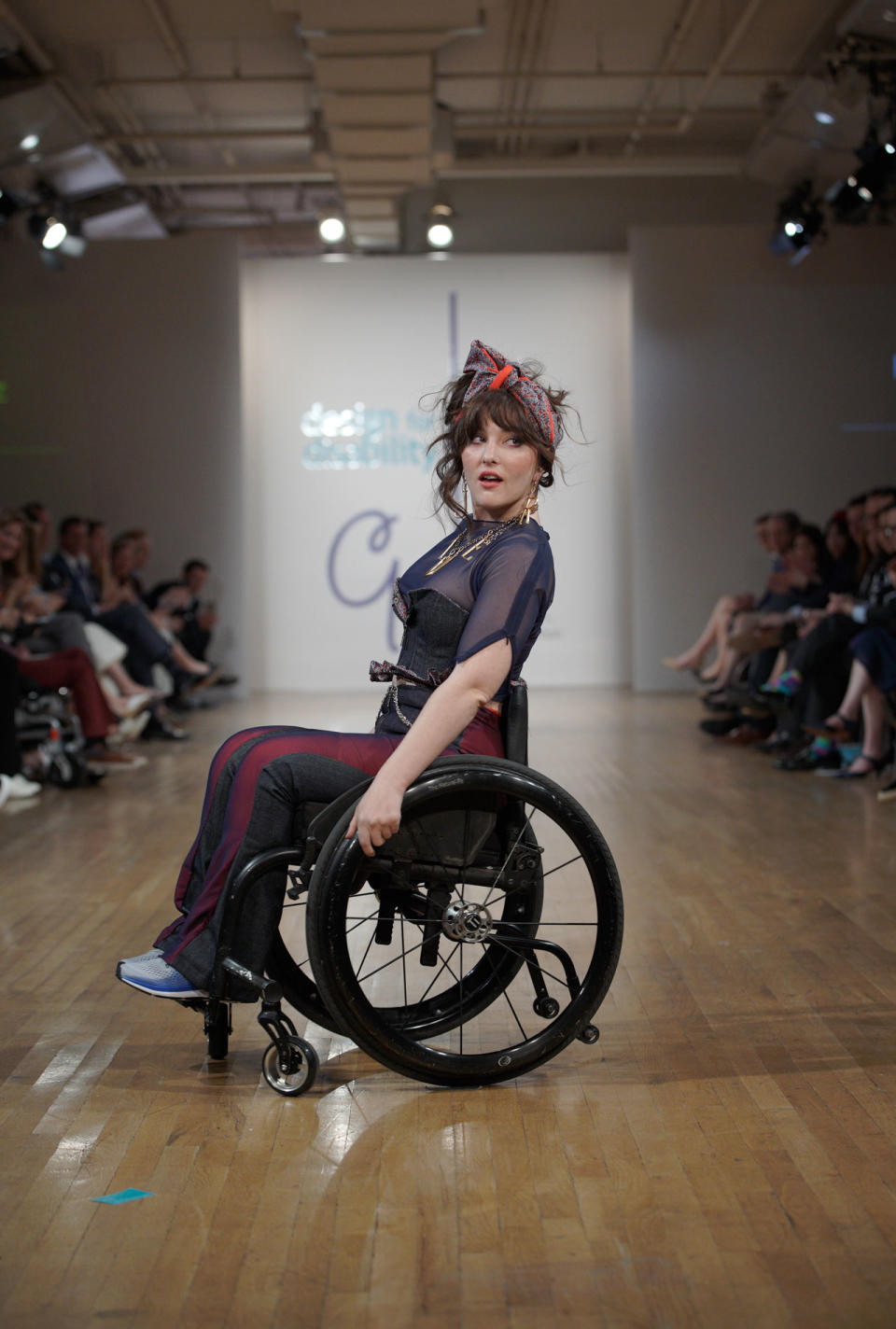
“It’s tough to admit, but it’s often hard for people to see past disability,” says Yates. “There are so many misconceptions and misperceptions. What better way to change this than by creating fashion that helps us to see it all differently?”
The six participating designers in the Design for Disability show were fashion students from F.I.T., Pratt Institute, and Parsons. For the past four months they worked alongside their mentor, Anna Sui, to create custom designs for 18 models with a variety of disabilities, including cerebral palsy, spinal muscular atrophy, spina bifida with hydrocephalus, transverse myelitis, and osteogenesis imperfecta.

In a sense, the models, like Bernadette Scarduzio, Ryan Haddad, Andrea Dalzell, and Lacey Tompkins, really influenced the show’s clothing, explaining to the designers what they dreamed of wearing but have never been able to find in a store. It was up to the designers to make those fashion fantasies a reality, by moving the seams of a pant from the side of the leg to the front to be wheelchair friendly, creating patterns that could work with a body that isn’t entirely symmetrical, or crafting a bomber jacket that could be put on in two different ways — with and without the help of a caretaker.
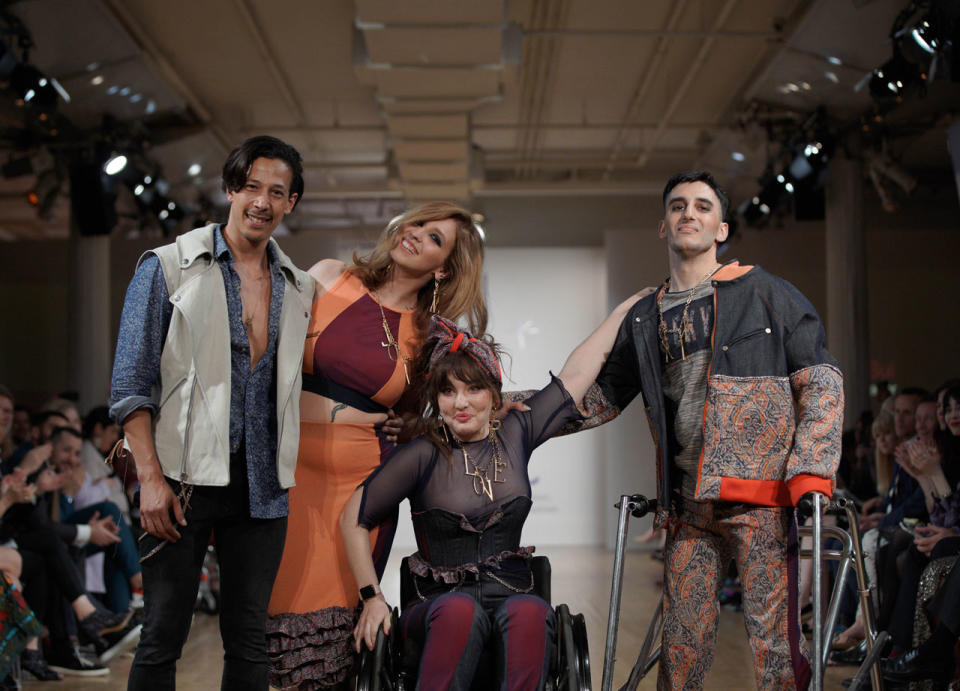
Sui, meanwhile, brought a decidedly high fashion touch, ensuring that the show felt like one of her own New York Fashion Week runways, replete with flashes of color, boho silhouettes, and flirty prints — plus A-list attendees including Sofia Coppola, Derek Lam, Norma Kamali, and Hanne Gaby Odiele. Sui also brought on as partners Liberty of London, which donated yards of its signature floral prints, and Cotton Inc., which provided denim, cotton knits, and novelty jacquards for the students to use.
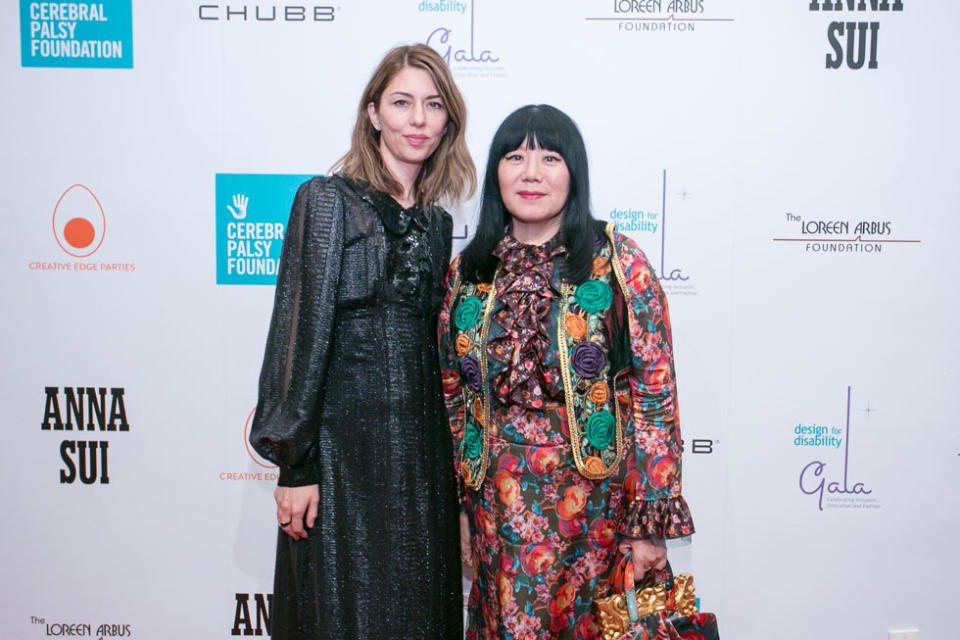

Sui is hardly the only designer who’s taking charge in the disabled fashion space; Tommy Hilfiger, Target, and Zappos have recently introduced ranges specifically designed for shoppers with disabilities. But, according to the CDC, one in every five adults in the U.S. has a disability, so there’s quite a lot of room for growth in this category.
As Sui pointed out, any form of education or awareness is a step in the right direction. “The more we talk about this, the more knowledge that we gain, and that’s where we will find acceptance,” she says.
So what’s next for the future of disabled fashion? Getting retailers into the mix to see that the disabled have a real need for clothing catered to their bodies. Richard Ellenson, the CEO of the Cerebral Palsy Foundation, is taking a pretty big role in this movement. Over the next few years, as the dialogue surrounding adaptive clothing keeps evolving, he anticipates bringing some of the designs from this fashion show into production. “Happily, the discussion is no longer, ‘Do we need inclusive fashion?’” he says. “Rather, it’s ‘How do we do it well?’”
Read more from Yahoo Lifestyle:
Follow us on Instagram, Facebook, and Twitter for nonstop inspiration delivered fresh to your feed, every day.
